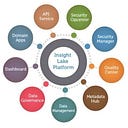Demand Sensing vs Demand Forecasting
Introduction:
In today’s competitive and fast-paced business environment, having accurate demand predictions is crucial for supply chain management and overall business success. Over the years, different methods have been developed to forecast demand, with demand forecasting and demand sensing emerging as two popular approaches. In this blog post, VerticalServe, a leading consulting firm, will provide a comprehensive comparison between demand sensing and demand forecasting to help you understand their differences, benefits, and limitations.
- Demand Forecasting: The Traditional Approach
Demand forecasting is a traditional method that relies on historical data to predict future demand. This approach uses statistical methods and algorithms to analyze past sales data, considering factors such as seasonality and trends. While demand forecasting has been the go-to method for many businesses, it has certain limitations:
- Inaccuracy: Since it relies heavily on historical data, demand forecasting may not accurately predict sudden changes in market conditions or customer preferences.
- Longer lead times: Due to its reliance on historical data, demand forecasting requires longer lead times, making it less agile in reacting to rapid shifts in demand.
2. Demand Sensing: The Modern Solution
Demand sensing is a more recent approach that leverages advanced analytics, artificial intelligence (AI), and machine learning (ML) techniques to predict customer demand with greater accuracy and agility. This method analyzes real-time data from various sources, such as point-of-sale transactions, customer orders, and social media, to provide more timely and accurate demand forecasts. Key advantages of demand sensing include:
- Improved accuracy: By incorporating real-time data and AI/ML techniques, demand sensing can generate more accurate demand forecasts, helping companies to react faster to fluctuations in demand.
- Shorter lead times: Demand sensing can generate forecasts with shorter lead times, allowing businesses to be more agile in adjusting their supply chain operations.
3. Comparing Demand Sensing and Demand Forecasting
To better understand the differences between demand sensing and demand forecasting, let’s compare their key characteristics:
- Data sources: Demand forecasting primarily relies on historical data, while demand sensing incorporates real-time data from various sources.
- Forecasting methods: Demand forecasting uses statistical methods and algorithms, while demand sensing leverages AI/ML techniques for more accurate predictions.
- Forecast accuracy: Demand sensing generally offers higher forecast accuracy compared to demand forecasting due to its ability to analyze real-time data and adapt to changes in market conditions.
- Agility: Demand sensing allows for more agile decision-making and supply chain adjustments, while demand forecasting requires longer lead times.
4. Choosing the Right Approach for Your Business
The choice between demand sensing and demand forecasting depends on your business’s specific needs and resources. Factors to consider when choosing the right approach include:
- Industry: Demand sensing may be more suitable for industries with rapidly changing market conditions or high levels of competition, while demand forecasting might be sufficient for more stable industries.
- Data availability: If your business has access to real-time data from multiple sources, demand sensing could be the better option. Otherwise, demand forecasting may be more appropriate.
- Resource allocation: Implementing demand sensing may require additional investments in technology and skilled professionals, whereas demand forecasting typically requires fewer resources.
Conclusion:
Demand sensing and demand forecasting are both valuable approaches to predicting customer demand. However, demand sensing offers several advantages over demand forecasting, including higher accuracy, shorter lead times, and greater agility. If your business operates in a rapidly changing market, investing in demand sensing technology could provide a significant competitive edge. VerticalServe is here to help you make the right decision and guide you through the implementation process for the chosen method, ensuring your business is well-equipped to meet the challenges of today’s competitive landscape.
About:
VerticalServe Inc — Niche Cloud, Data & AI/ML Premier Consulting Company, Partnered with Google Cloud, Confluent, AWS, Azure…50+ Customers and many success stories..
Website: http://www.VerticalServe.com
Contact: contact@verticalserve.com
Successful Case Studies: http://verticalserve.com/success-stories.html
InsightLake Solutions: Our pre built solutions — http://www.InsightLake.com
